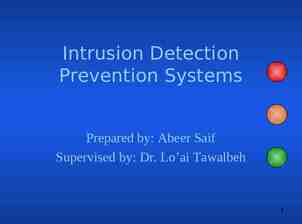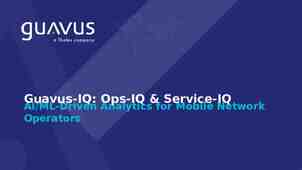Example assignment brief for assessment unit A1, A2 or B2 in:
12 Slides3.69 MB
Example assignment brief for assessment unit A1, A2 or B2 in: BTEC Level 3 in Art and Design Practice BTEC Level 3 in Creative Media Practice Identity
Guidance for teachers on using example assignment briefs (delete slide prior to handing out to learners) Example Assignment Briefs (EABs) are provided for use and guidance. They have been developed to provide realistic vocational scenarios as client briefs. The content demonstrates how briefs can be used for assignments for all or part of assessment units. EABs can be adapted in any way to meet the needs of your learners and programme, however they must maintain the required features of an assignment for a BTEC qualification. Please see the Delivery Guide for this qualification for more information on setting and adapting assignments. While this assignment has been designed to be used to support delivery of assessment unit A1, it could also be adapted for use with units A2 or B2. Learners must undertake different assignments for each assessment unit and the expectations in each assessment unit will also be different. Identit y A1: the assignment could be used to give thematic context to explorative and developmental work produced by learners which would form part of evidence for the unit, combined with evidence from other assignments. If adapted for use with A2 or B2 the focus of the assignment would be the application of skills to undertake a focused creative project rather than on the exploration and development of the skills. A2: as a unit dedicated to undertaking a focused creative project in response to an assignment brief, more time would be expected to be spent exploring different ideas, developing work and presenting outcomes to meet the brief. B2: the response itself is likely to be more extensive and fully resolved given the time allocated to the development of work towards the You should ensure thethe following sections this assignment brief are appropriate for your assignment and depth of contentofbeing assessed through this unit programme and learners, and adapt as necessary e.g.: Requirements: to indicate the types of media and outcomes. Requirements – detail: to indicate the specific requirements for focused programmes, i.e. if the programme is fashion or games orientated, it would be advisable to set narrower outcome requirements. Inspiration: to use examples of sources relevant to the programme. Guidance: to indicate the specific expectations of how learners will develop and submit work. Additional deadlines can be included for different tasks within the assignment if needed.
Guidanc e Client Lighthouse Gallery Context The Lighthouse Gallery are holding an exhibition, which will be titled Who Am I? Young practitioners have been asked to explore and develop ideas for creative art, design or media work relating to the theme of ‘Identity’, which explore the question Who am I? Requirements The responses can be in any suitable form which could include a finished piece or a series of more experimental pieces that could be developed further. Audience The primary target audience is for young people from the ages of 1625. The aim is to engage young people and to encourage them to think about and express their own identity. Deadline To be completed by assessor. Resubmission deadline To be completed by assessor. Assessor To be completed by assessor. Identit y
Guidanc e Requirements – detail: You will attend a number of skills workshops to develop a range of skills appropriate to the specialism(s) you are working in. Throughout the workshops you should explore the potential and limitations of these skills to develop your response to the theme ‘Identity’. The responses can be in any suitable form which could include a finished piece or a series of more experimental pieces that could be developed further. Responses could be any of the following types of products or outcomes. These are suggestions only, and the list is not exhaustive or exclusive: 2D or 3D Fine Art or craft response Short film, documentary or animation Graphic design, illustration or photography Website, app or interactive media Fashion item and/or fashion photography 2D or 3D game Note: you should agree your ideas with your tutor to ensure they meet the assessment criteria before you begin working. Identit y
Inspiration: What defines your identity – is it your cultural identity, nationality, social group, gender, religion, body, style, hobbies, or is it something else? You could use the following as starting points to provide some inspiration for your ideas, (these are not the expectation of outcomes): How you look How you feel What you like What you don’t like What you believe in What you don’t believe in How you think other people see you Identit y
Guidance overview You will need to plan and organise your project individually as part of your professional practice and problem solving. The assessment criteria are not a series of tasks that are completed independently. You will use a combination of skills relating to the criteria continuously throughout the assignment. The criteria are equally weighted, meaning they should be given equal importance in your project. The guidance slides of this assignment brief indicate how you could approach each of those skills and what types of AC1: Informing ideas Use skills for informing ideas, interpreting the brief and developing ideas and outcomes as they progress. AC5: Communication Show skills in communicating the meaning, purpose and function of work, including development, outcomes and presentation, in order to engage the audience. Communication AC4: Professional practice Show how you apply professionalism to your assignment through technical practice, project management and working safely. Identit y Informing ideas Professional practice Problem solving Technical skills AC2: Problem solving Show problem solving throughout by engaging with the brief and its requirements including ideas generation, experimentation, testing and reflection on the meaning, purpose function of your work. AC3: Technical skill Show technical skills throughout by exploiting the potential of media, materials, techniques and processes. In early stages of the project, this might be when investigating material opportunities. Later it would be in the outcomes or their presentation.
Guidanc e Informing ideas When undertaking the workshops you should keep a record of the skills you develop, referring to detailed examples related to the work you produce. This record may be kept in any appropriate format/s, e.g. sketchbook, production log, blog etc. Guidanc e Primary and secondary methods for informing ideas: Interpret the brief – client, audience, requirements, purpose Explore the work of practitioners related to the theme Explore the potential of a variety of media, materials, techniques and processes in relation to your potential outcome Make observations and records of the skills you explore and develop Use of research to inform development, outcomes and presentation to improve and refine your work and ideas Evidence could include: Physical or digital portfolio, blog, sketchbook, exhibition, presentation and/or showreel documenting: Initial intentions - informed by research, explaining how it will meet the brief How you used investigation skills to inform ideas (e.g. research, critical analysis of existing work) Identit y
Guidanc e Problem solving You should use problem solving at all stages of your work by testing, reviewing and reflecting on progress of: Guidanc e Interpreting the brief, client, audience, requirements, purpose Generating initial ideas Experimentation Applying stages of the creative process in order to develop and refine Testing and feedback Evidence could include: Physical or digital portfolio, blog, sketchbook, exhibition, presentation and/or showreel documenting and reflecting on: Initial ideas Stages of development and refinement Outcomes of testing and/or feedback Critical review and reflection Identit y
Guidanc e Technical skills You should use the most appropriate and effective technical skills throughout the assignment and workshops you undertake: Development of work: trying different techniques and seeing what is the most useful exploring the properties of media and making comparisons taking work through a series of different processes to compare outcomes. Production of outcomes Evidence could include: Physical or digital portfolio, blog, sketchbook, exhibition, presentation and/or showreel, documenting and reflecting on: The creative and technical skills you used Initial intentions presentation – with early draft work and practical research into media Series of prototypes Final presentation Identit y
Guidanc e Professional practice You should apply professional practice when working on the assignment by: Identifying and using best practice associated with the type of work you are creating: consider and test what others do in industry keep things safe and manage risks. Applying project management: breaking up the assignment into manageable parts exploring ways of working efficiently. Setting actions and targets for meeting the brief: creating a proposal or plan organising resources Exploiting stages of the creative process. Evidence could include: Physical or digital portfolio, blog, sketchbook, exhibition, presentation and/or showreel, documenting and reflecting on: The professional skills you developed to manage planning and production processes Presentation of plan for your outcomes Submission on time of an organised portfolio Outcome(s) that show an understanding of related professional practices Identit y
Guidanc e Communication You should use communication skills throughout the assignment and workshops by: Considering the client and audience needs Working to ensure the meaning, message and impact are clear Using visual language and creative forms of communication Communication opportunities: Expressing clear intentions at an early stage by aligning work with the audience and purpose of the brief Using testing and review to reflect on the quality of how the work communicates Producing prototypes and outcomes that clearly communicate the requirements of the brief Working with others and presenting intentions Evidence could include: Physical or digital portfolio, blog, sketchbook, exhibition, presentation, showreel, documenting and reflecting on: How effectively, fluently and imaginatively you communicated the intended messages through the work you produced. Initial intentions presentation – personal communication Series of prototypes that communicate ideas Reflection on stages of development with explanation of choices in relation to assignment Outcome(s) presented in relation to audience and related industry conventions Identit y
Identit y

















